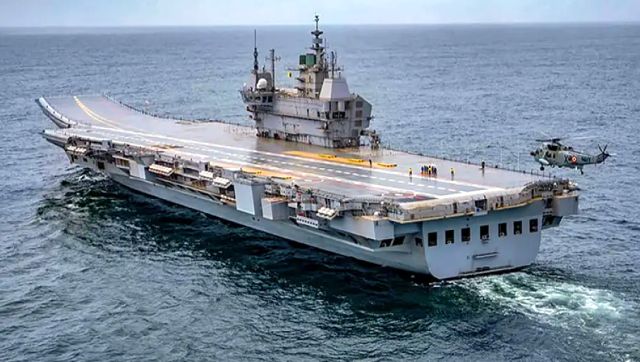- Views: 4K
- Replies: 25
)
India's strategic ambitions are closely tied to its naval prowess, and a central pillar of this ambition is the Indigenous Aircraft Carrier-3 (IAC-3). This proposed 65,000-tonne vessel is slated to carry 54 fighters, a testament to India's commitment to projecting power across the vast Indian Ocean Region (IOR).
As the details of the IAC-3 are hammered out, a pivotal question has emerged: should it be nuclear-powered and equipped with electromagnetic catapults? A compelling case can be made for this technological leap, based on several strategic, operational, and economic factors.
Unlimited Range and Endurance
A nuclear-powered aircraft carrier, unburdened by the need for frequent refueling, can operate at sea for years on end. Imagine the possibilities: India's naval reach extends across the entire IOR, ensuring a continuous and reassuring presence, deterring potential threats, and responding swiftly to crises. This is particularly crucial considering India's sprawling coastline and the strategic importance of maintaining maritime dominance in the region.Countering China's Naval Rise
China's naval ambitions are no secret. The People's Liberation Army Navy (PLAN) is rapidly modernizing its fleet, and reports suggest that a fourth aircraft carrier, potentially nuclear-powered, is in the works. This would give China a significant edge in maritime power projection.To maintain strategic parity and counterbalance China's growing influence, India needs to invest in cutting-edge naval technology. A nuclear-powered IAC-3 equipped with electromagnetic catapults would signal India's resolve to remain a dominant force in the IOR.
Enhanced Operational Effectiveness
Electromagnetic catapults (EMALS) are a game-changer for aircraft carriers. They enable the launch of heavier and more diverse aircraft, including advanced fighters, surveillance aircraft, and drones.This versatility enhances the carrier's air wing capabilities, allowing it to undertake a wider range of missions, from air superiority to intelligence gathering.
Economic Considerations
While the initial cost of a nuclear-powered carrier is undeniably higher than that of a conventional one, the long-term operational costs tell a different story.Reduced refueling requirements and increased operational availability result in significant cost savings over the carrier's lifespan.
The strategic advantages and extended deployment capabilities also contribute to the economic viability of a nuclear-powered IAC-3.
Environmental Benefits
Nuclear-powered carriers generate zero air pollution during operation, aligning with global efforts to combat climate change. They also eliminate the need for fuel convoys, reducing logistical complexity and vulnerability.Technological Advancement and Self-Reliance
Developing a nuclear-powered aircraft carrier is a complex undertaking that requires cutting-edge technology and engineering expertise. Embarking on this project would stimulate innovation and bolster India's indigenous technological and industrial capabilities.This self-reliance is a cornerstone of India's broader strategic goal of achieving technological sovereignty and reducing dependency on foreign defense imports.
The Way Forward
The decision to invest in a nuclear-powered aircraft carrier is a strategic one with far-reaching implications. It is a testament to India's determination to safeguard its maritime interests, counterbalance regional rivals, and maintain its position as a leading naval power.While the initial costs and technical challenges are substantial, the long-term benefits in terms of strategic advantage, operational effectiveness, and economic viability make a compelling case for India to pursue this ambitious endeavor.
The nuclear-powered IAC-3 will not just a represent ship, but a symbol of India's unwavering commitment to a secure and prosperous future.
